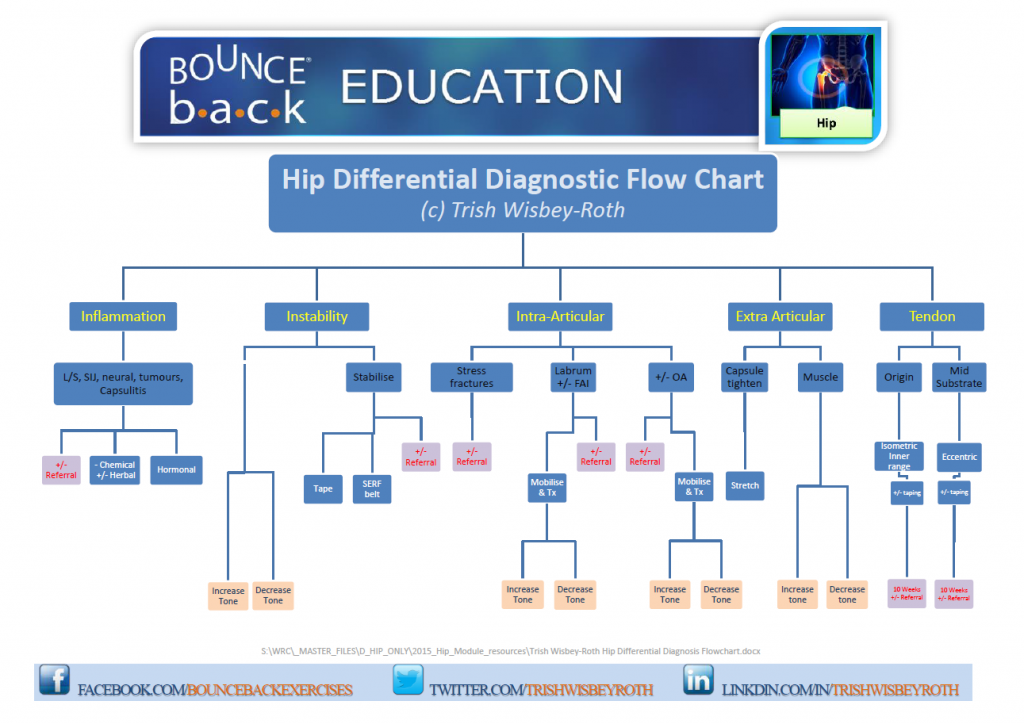- Spinal Strength And Stability System
- 1300 733 389

Posted by Philipp Roth in Bounce back Education, Case Study, Trish Wisbey-Roth course on May 1st, 2017
Easier said than done, or is it?.
What if I told you there is now a simplified flow chart approach to hip differential diagnosis which makes both manual treatment and specific exercise prescription clear and logical. Would it be worth your while to understand a little more? Well in this weeks Blog I provide you with the visual answers to understand the “Hip Differential Diagnosis Flow Chart” and a case study that puts it into practice with videos, as a picture tells a thousand words!
How much were we really taught about differential diagnosis and treatment of the hip in Undergraduate courses? Not very much at all, but via advances in hip imaging, arthroscopic surgery as well as muscle and tendon research, our knowledge about how the hip should be assessed and rehabilitated has exploded in the past 5 years.
During my Sports Physiotherapy Specialist preparations, it became clear that there are well in excess of 50 hip tests that are recommended for effective differential diagnosis of the hip as pathology is so widely varied. Authorities on the hip agree that differential diagnosis is the key and must be considered and addressed to optimise performance, but so often a combination of presenting signs and symptoms leaves the health professional confused and frustrated, even if you have remembered all of those 50+ tests.
The trick to understanding the hip lies in using a visual flow chart that divides presenting hip pathologies into 5 different categories and understand that more than 1 issue can be present and muddy the water. Using the flow chart approach to hip diagnosis will keep you on track to seeing the whole hip picture clearly.

The 5 categories that all assessment strategies from the beginning should aim to deferentially diagnose are:
Once the presenting issues are identified and demystified, a treatment and exercise program can be designed with an evidence based rehab strategy. The case study link using Powerpoint and video shows part of an assessment protocol differentiating between anterior hip stiffness and anterior hip instability.
If the hip excites or confuses you….join me at my upcoming 2-day Hip Course to be held at Newcastle 22-23 September 2018 ($828) – or book via the APA portal if you are a APA member |
|